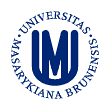Leica DMLB microscope with a set of fluotar lenses (HC Fluotar 5/0.15, 10/0.30, 20/0.50, 40/0.70, 100/1.30 and a Plan 2/0.07 lenses) equipped with the Leica S1 scanning camera is used to obtain pictures at the resolution of up to 5112×5112 pixels, 3×12 bit color.
Later Leica DMLA microscope with a set of PlanApo lenses (HC Fluotar 5/0.15, HC PlanApo 10/0.30, 20/0.50, 40/0.70, 100/1.30 and a Plan 2/0.07 lenses) equipped with the Nikon DMX-1200 digital camera was used to obtain pictures at the resolution at 1200×1000 pixels, 3× 8 bit color. Motorized stage (Merzhäuser) was automatically moved from one image to another. Software for image analysis and manipulation Lucia DI by LIM (Laboratory Imaging, Prague) was used to create composed, very large pictures.
The same microscope and software is now used to create focusable images.
Recently we are using microscope Nikon 90i equipped with a set of objectives 2 – 100×. Objectives CFI PlanApo 20×/0.75, CFI 40×/0.95, CFI VC 60×oil.im./1.40 and CFI VC 100×oil.im./1.40 are used to capture the images. The microscope is controlled by NIS ELEMENTS AR LIM (Laboratory Imaging, Prague). Camera Nikon DS-Fi1 has resolution 2560×1920 px, 3×8 bit. Motorized stage: Prior ProScan with a holder for 4 slides. The system was obtained through grant support MEDIGRID (CESNET) in 2008.
These pictures are digitally manipulated (color balancing, contrast enhancement and sharpening), 3×8 bit color and archived on CD ROM. Subsequently these images are compressed using JPEG (JFIF lossy format) to 900×900 pixel images and integrated into the hypertext atlas. Sizes of very large images (showing details) are up to 7400×7400 pixels.
Images with focusing feature (z-stack of images) were taken by Nikon Eclipse 1000 microscope with a set of Plan Fluor lenses (esp. 100/1.30) with motorized focusing, digital camera 1300×1000 px (Basler), controlled by Lucia DI image analysis (LIM) software.
The same microscope and camera were used to take some of the fluorescence images.


